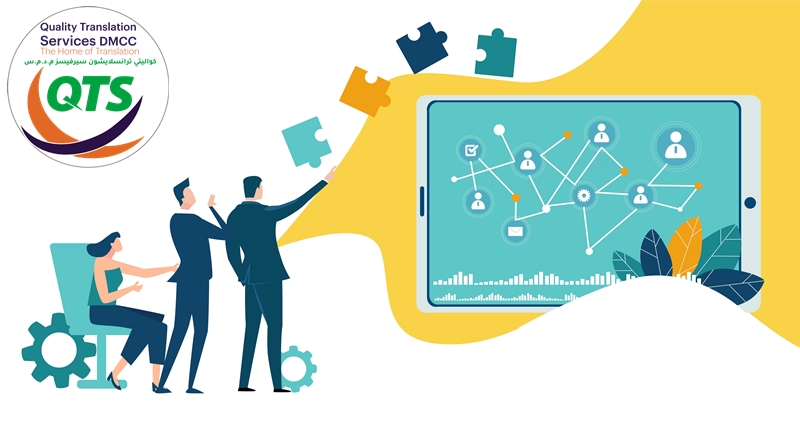The Role of Market Research Translation in the World
With organizations are expanding their businesses across borders, outside of the local market, the role of market research translation has never been so crucial. In this digital world, there are a lot of options available to blur the borders and help your business to connect with new customers.
When you are dealing with international audiences, you need to have a deep understanding and establish effective communication with them. Market research is the way to go. The global market research services market reached $83.93 billion in 2023 at a 3.4% CAGR.
Market research helps you to have a better understanding of your new target audience and suggests ways to approach it. But the only thing that pulls down this process is the language barrier. When you are stuck in this linguistic hurdle, market research translation services comes to the rescue! It serves as a bridge to connect your business with diverse customers, enabling you to understand cultural nuances and modify the strategies accordingly. In this blog, we’ll discuss the important aspects of market research translation and its role in transforming the business landscape.
What is market research translation and why might you need it?
Market research is the process of acquiring information about customers. It includes all the relevant data of the new market to the preferences of your target audiences. With the help of such information, you can make informed business decisions. The success of a product and service in a new market can be analyzed by the data gathered through market research. Once you understand your customer expectations, you can develop an effective marketing strategy to further expand your business. You can perform market research in two ways. They are,
Qualitative market research– In this approach, customer information is gathered with the help of face-to-face and in-depth interviews. It is usually focused on small groups to analyze customer behavior.
Quantitative market research– In this approach, customer information is gathered through online questionnaires and surveys. Focusing on large groups, it analyses statistics and numerical data.
So far, we’ve explained what market research is and its types. Let’s move on to the actual topic, market research translation, and why it is needed for a business to run successfully.
In the case of the global market, you can never succeed without knowing the language of your target audience. It is the way to communicate, connect, and customize your products and services for new customers. Market research translation services are extensive and include translation of surveys, questionnaires, discussions, concepts, and materials. To achieve effective results, you need to accompany translation with localization. Localization is similar to translation, focusing more on non-linguistic factors to adapt your content according to the specific market. With 83% of non-English speakers worldwide, without market research translation, you’ll be at a huge loss.
Understanding diverse markets
Market research analysis serves as a map to navigate your businesses through the intricacies of diverse markets. The language barrier is evident when performing market research, preventing the discovery of customer’s genuine opinions. Translating research surveys buys you a load of benefits. By facilitating communication between your business and customers through market research translation services, you can have more accurate conclusions at your disposal. It also allows you to ask questions more precisely and the way that it is intended to be. It enables you to gain valuable insights about customers, behavioral patterns, and market trends, laying the foundation for informed decision-making.
Adapt to cultural differences
Apart from language, cultural differences also play a huge role in impacting business strategies. Market research translation provides insightful perspectives into cross-cultural issues, boosting your company’s image. You have to modify your market research techniques based on the specific region. From product names to packaging designs, every little detail requires careful consideration of a particular cultural context. Understanding cultural nuances allows you to send the right message. This is why it is important to invest in expert translators, who can tailor the marketing strategies to align with local sensibilities.
Enhances quality and experience
In the globalized business world, the high-stakes business decisions of an organization are shaped by the global market. A successful product is determined by the client’s preferences and interests. Surveys in multiple languages reach much wider people, resulting in high-quality data from larger and more diverse audiences. With the help of precise market research, businesses can easily identify the flaw and improve their product. The market researchers should also pay attention to the participant’s experiences. Asking questions to the people in their language will encourage people to give their honest opinion and they are most likely to enjoy this interaction session. Any kind of miscommunication and mistranslation results in poor experience of participants, directly affecting the conversion rate. Personalizing the market research approach not only enhances customer satisfaction but also fosters trust and brand advocacy.
Conclusion
The role of market research translation doesn’t just end with the translation process. Market research translation serves as the cornerstone for an organization’s global footprint. It bridges languages, and cross-cultural differences, and drives business growth and innovation. By understanding and embracing linguistic and cultural diversity, businesses can establish meaningful communication with their customers around the world. In a dynamic digital landscape where there are no limitations; investing in accurate market research translation services is a necessity for a business to thrive in the global market.
Looking for Legal Translation Services in Dubai? Contact us to get quality translation in 150+ languages.

